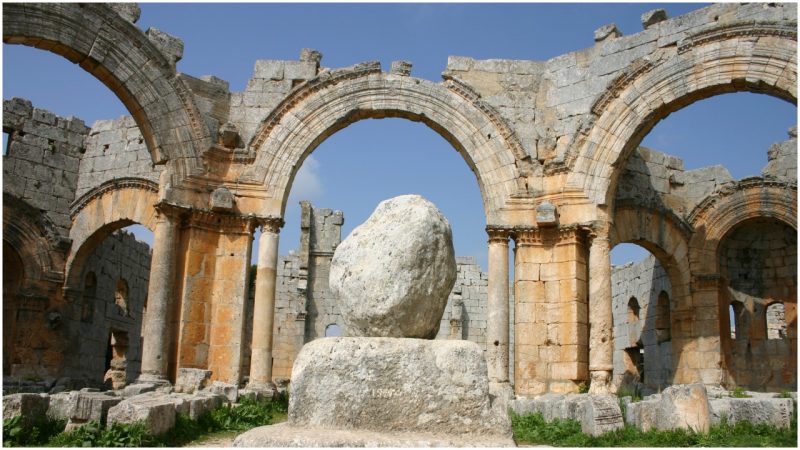Saint Simeon Stylites the Elder was born near the end of the 4th century. Son to a shepherd, Saint Simeon found his love for Christianity when he was just 13 years old; at age 16, he entered a monastery. Some years later, Saint Simeon felt the need for a more solitary life, and the idea of becoming a hermit monk only seemed logical.
But his unique approach toward asceticism did not involve a cave, as with many other monks of the day. Instead, Saint Simeon chose to live on top of a pillar. At first he resided on a platform thought to be little more than 10 square feet, atop a nine-feet-tall stone column, later moving to an even higher column of 50 feet. In this way, he believed that God would be closer to him.
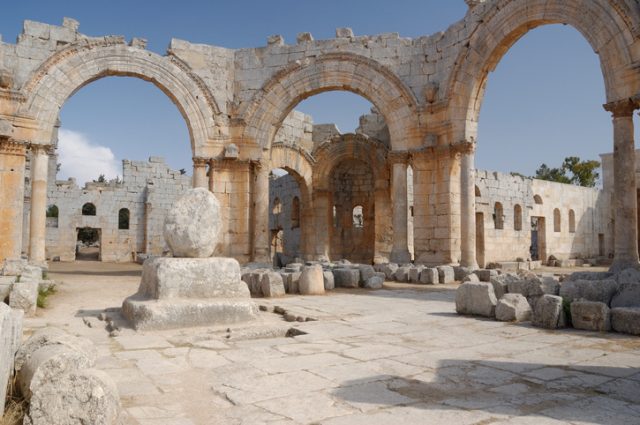
It wasn’t long before word got out and people from far and wide came to see this man who stood on top of a stone pillar and preached twice a day. And for 37 years, Saint Simeon lived on top of that pillar, until his death in the year 456. A cornucopia of soldiers, an army of devotees, and seven bishops escorted the remains of Saint Simeon to his final resting home in the ancient Greco-Roman city of Antioch on the Orontes River.
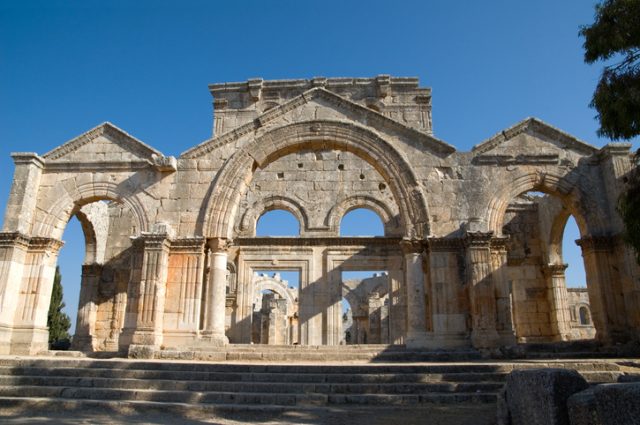
His grave immediately became a place of pilgrimage; his pillar too was a cherished pilgrimage destination. A vast building was erected in honor of Saint Simeon at the site of his pillar near Allepo, in modern-day Syria.
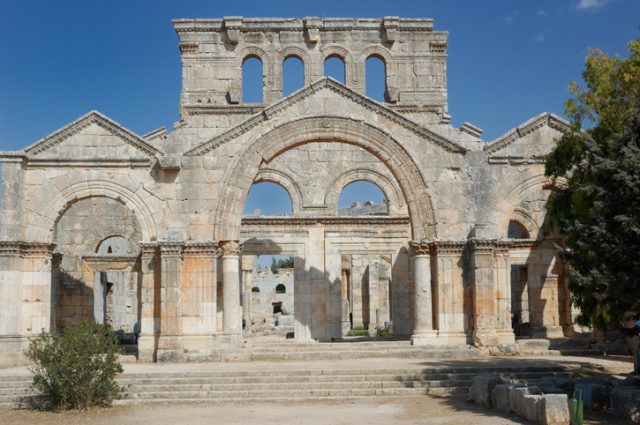
The Qal ‘at Sim ‘ân, meaning mansion of Simeon, was comprised of four basilicas that surround and enshrine Saint Simeon’s pillar in the inner courtyard. Octagonal in shape, the church covers 1.2 acres of land; that is almost as big as the Hagia Sophia church in Constantinople. But Hagia Sophia is located in a crowded area, unlike the Church of Saint Simeon Stylites, which is located some 40 miles from the nearest human settlement.
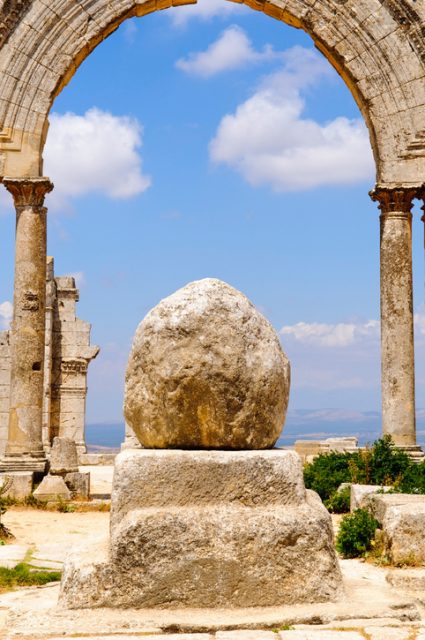
Alongside the church, a monastery was born, as well as a number of hostels and two more churches. All of these structures were enclosed inside a stone wall, giving it the appearance of a vast complex. The church itself incorporates a couple of architectural styles in its design.
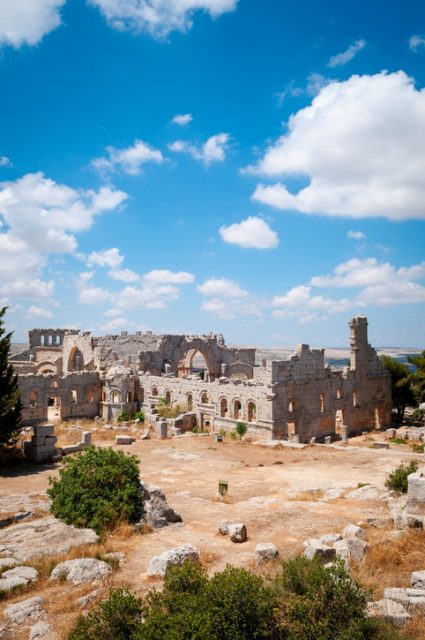
According to some scholars, among the first elements to be built were the baptistery and the main basilica. Then followed the monastery that was erected close to the eastern basilica. The baptistery, with its stunning wooden roof, was located close to the southern basilica and was erected not long after the main church was finalized. Back in those days, the baptistery had the finest Christian architecture Syria ever witnessed.
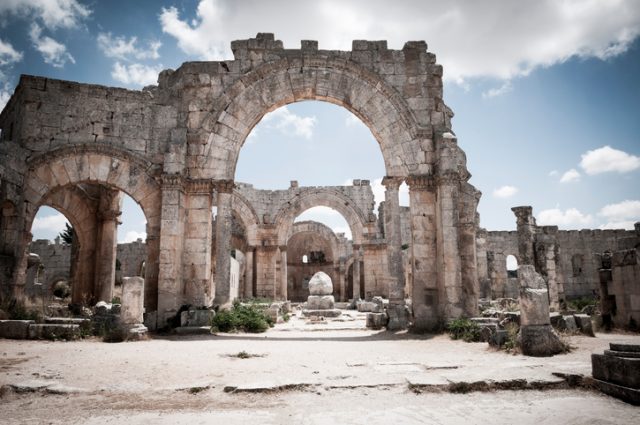
Over the years, Qal ‘at Sim ‘ân went through several wars. The first one was the Arab-Byzantine War when Sa’d al-Dawla attacked the complex and managed to conquer it. Despite everything, worshipers still came to this holy site.
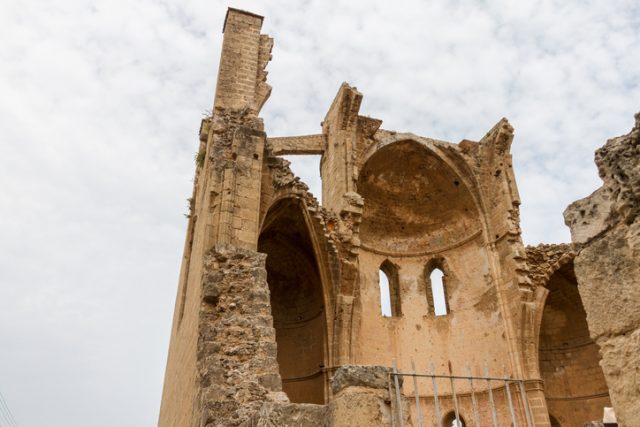
Many years later came the Syrian Civil War. This fight caused serious damage to the whole complex. Illegal stone removal and air strikes conducted by the Russian Air Force caused many of the structures to fall into ruins. The church was already in ruins when this happened, but never the less, major damage was still done.
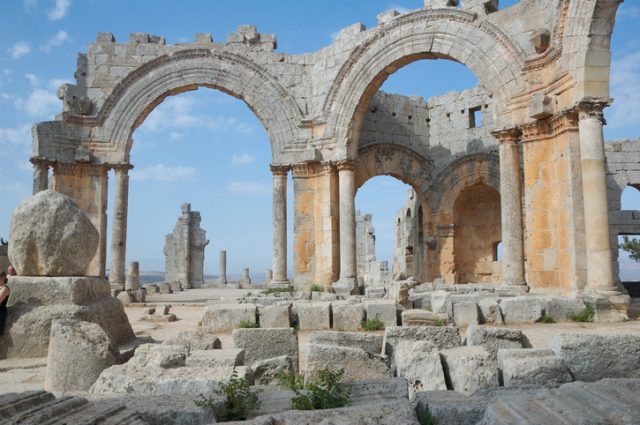
Today, the military of Turkey holds an observation post on the site. Over the years, the church received a number of monikers such as the Fortress of Simeon or Monastery of Simeon.
Related story from us: Bedham School and Church: A ghostly shell of Victorian days
The Church of Saint Simeon Stylites is part of what is collectively known as Syria’s Dead Cities; in essence, this is a collection of 700 abandoned settlements. The pillar of Saint Simeon remarkably stood until very recently, although much of its greatness was lost and the pillar was much reduced in height after years of exposure to bad weather, wars, and artifact seekers. It was reportedly destroyed by a missile attack in May 2016.
